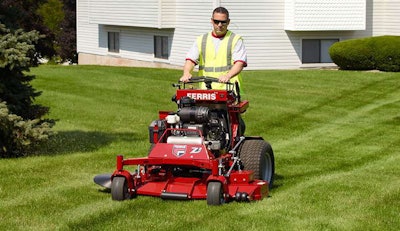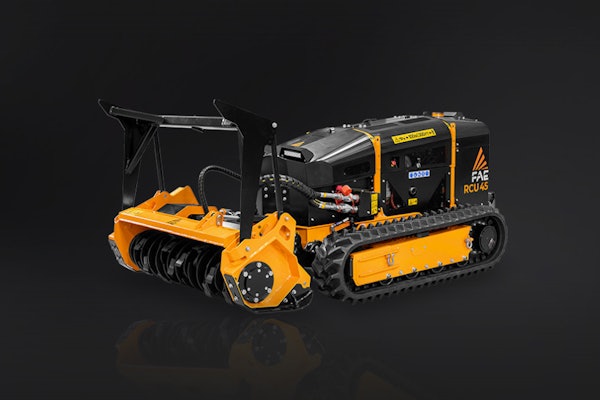 Photo: Ferris
Photo: FerrisThink about some of the most common situations landscapers run into on the jobsite every day, and ask yourself how many of them apply to you. If you answer “yes” to these, you may want to consider a stand-on zero-turn mower rather than a mid-mount or walk-behind mower:
Is operator comfort important?
It almost always is, and a lot of focus over recent years has been on the seat. With a stand-on mower, you need to think about the operator platform the same way you think about a seat on a mid-mount zero-turn. Is the operator platform wide enough? Is it in the right position for balance? Is the platform adjustable to accommodate a variety of conditions and operators? The Ferris SRS Series has an adjustable suspension operator platform, which gives the operator the ability to adjust the dampening effect without the need for any tools, optimizing comfort and increasing productivity.
Do your operators frequently need to stop and start to move obstacles and clear debris?
If you answered “yes” to this question, then a stand-on zero-turn mower is probably the right mower for the job. When you compare stand-on mowers, evaluate the steps required to stop the mower, move the obstacle and then get mowing again. Are there any steps that are time-consuming or annoying? If there are added steps, it’s likely the operator will skip them and just keep mowing. The PTO on the Ferris Z3X conveniently disengages when the operator steps off the platform to pick up an obstacle or clear debris. When the operator steps back on, a quick pull of the PTO re-engages the blade to the unit to continue mowing.
Is the majority of your work cutting hilly spaces/lawns?
If you are predominantly working on flat areas for long periods of time, a mid-mount zero-turn mower will work great. But, if your crews also cut hilly or sloped grounds, a stand-on mower could be a better option. The advantage of a stand-on is that the operator can counterbalance the terrain with their whole body. When evaluating stand-on mowers, assess the overall center of gravity of the unit and consider where heavy components like the engine and fuel tanks are. Also, keep an eye out for traction-enhancing features such as large diameter tires and flexible frame components that keep all four wheels on the ground.
Do your contracts require a lot of cutting around landscaping, such as tall hedges and other high barriers?
Paver walls, planter areas and tree beds are everywhere, so it’s likely you answered “yes” to this question. If you did, it’s important to know that the operator perspective tends to favor a stand-on zero-turn mower. This is because the operator has a clear line-of-sight of all four corners of the mower, which increases confidence and productivity on the jobsite.
Do you have ample trailer space?
Take the time to know the dimensions of your trailer and compare mower models. Stand-on mowers are shorter in length than standard zero-turn mid-mount mowers because the engine is located in front of the rear axle. With stand-on mowers, you can fit more equipment on a trailer, or opt for a shorter (cheaper) and more-maneuverable trailer. A good rule of thumb is that a typical stand-on zero-turn mower can save a foot of space compared to a mid-mount mower.
EDITOR’S NOTE: This article was written by Dan Roche, marketing director of commercial products with Ferris.










